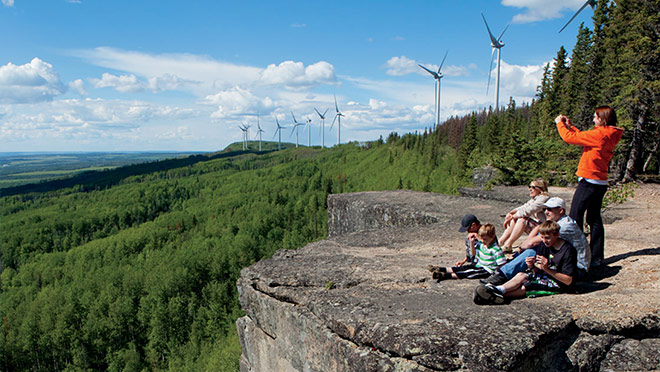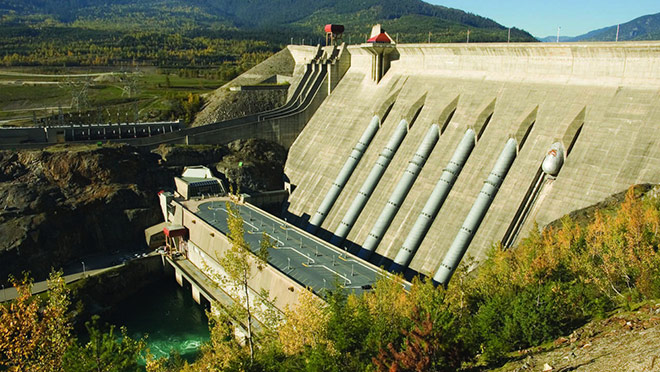Care about energy in B.C.? Have your say in Clean Power 2040

BC Hydro is asking for your help in developing its next 20-year electricity plan
Bill Clendinning and his resource planning team at BC Hydro think a lot about cold winter nights in January, battery technologies, electric cars, climate change, solar and wind power.
It's their job to sort through an avalanche of information about all those factors, and more, as they help devise a plan to address three key questions vital to BC Hydro's plan for the next 20 years and beyond:
- What should we do to ensure we continue to meet the province's electricity needs over time?
- How should we meet the demand for more electrification (switching from fossil fuels to BC Hydro's clean, hydroelectric power)?
- What new technology could we introduce to support our power system?
This month, BC Hydro is encouraging you to step up to offer your thoughts to help inform the latest BC Hydro Integrated Resource Plan, also known as Clean Power 2040. You can get involved through our quick online survey, by signing up for email updates, and/or by joining in deeper discussions – online or by phone – about B.C.'s future clean energy needs and how we can meet various challenges that may lie ahead.
"There will be opportunities for people who don't have a lot of understanding or background on utility and electricity issues to learn a little bit and share what's important to them about how they use electricity," says Clendinning, BC Hydro's director of energy planning and analytics. "And then we're offering deeper and deeper layers, where we can get into some of the key values and tradeoffs for British Columbians and BC Hydro as a company."
BC Hydro is seeking input from the public and Indigenous Nations in two stages: development of the draft plan this fall; feedback on draft actions in the spring of 2021.
Clendinning says the timing is good for planning, as B.C. currently has an electricity surplus, which has grown in part to a reduction of economic activity during the pandemic. "It's best to look at those energy supply issues when they're not staring at you in the face," he says.
The Integrated Resource Plan aims to deliver on a B.C. electricity strategy that minimizes costs, land and water impacts, reduces greenhouse gas emissions, and maximizes economic development opportunities, including those specific to Indigenous and rural communities.
BC Hydro makes it easier to get involved with online tools
The old-school approach to consultation called on members of the public to attend in-person meetings, or to submit feedback online. Amid a surge in online meetings and discussion as a result of the coronavirus pandemic, new tools open the door to involvement for many more British Columbians.
"Face-to-face discussions via video calls are still really valuable, but we know they don't work for everyone," says Judy Dobrowolski, a stakeholder engagement manager with BC Hydro. "What we're trying to do now in this digital world is make it easy to go online and share your feedback when it's convenient for you."
The easiest entry point is a quick online survey, which takes about 5 to 10 minutes to complete, and can be taken at any time of day now through November 15. It provides brief explanations of a number of electricity planning issues and tradeoffs, then asks a series of follow-up questions to gauge your level of support for certain choices. Topics range from the degree to which BC Hydro should continue to promote energy efficiency, to whether electricity rates should change at different times of the day to help reduce sharp peaks in energy demand.
For those who want to get even more involved, there's a more extensive survey that takes between 20 to 30 minutes to complete, as well as online discussions offered on different days that will centre on real-time discussions of key issues.
"Now people don't have to hire a babysitter for their kids so that they can attend a meeting," says Dobrowolski. "They can join in a conference discussion from the comfort of their homes."
A separate Indigenous consultation will also be held online. First Nations across B.C. have already been contacted with information about workshops due to start on September 26. Follow-up calls are being made this month as BC Hydro tries to get as much feedback as possible in the coming months.
"All of our projects, electricity purchase agreements and everything we do affects or touches First Nations in B.C. in some way," says Alison Hall, who manages Clean Power 2040 Indigenous consultation for BC Hydro. "With the [Universal Declaration of the Rights of Indigenous Peoples] and reconciliation efforts, we're paying very close attention to how important early engagement is. We want to know what matters to Indigenous peoples, and how their priorities can be integrated into our long-term planning process."

5 things you should know about electricity in B.C.
The Clean Power 2040 survey and background material offers an overview of key factors and issues around energy planning in B.C. But here are five things that create some context for what energy planning in B.C. is all about:
1. Energy use peaks on cold winter days
In many areas of North America, power use peaks on the hottest summer days when air conditioning is drawing enormous amounts of electricity. But while summers are warming and cooling needs increasing in B.C., our biggest demand comes on cold winter days when the combination of electric heating, lighting, and other home and business energy use combines to drive energy use up. This tests the electricity system's "capacity", its ability to meet what's known as peak demand.
2. Storage is hydroelectricity's big advantage
Ninety-seven per cent of the power BC Hydro generates is from clean, renewable resources. This is all thanks to our large hydroelectric system that allows for the storage of water behind dams, saving that power to be used when we need it most, such as during a January cold snap. Other options such as wind and solar are clean sources of power, but at least for now, there's no cost-effective way to store that energy for those cold winter days. We must use that power when the sun shines or the wind blows.
3. Emerging technologies factor heavily into energy planning
One conservation option on the table is to take B.C. homes to a new level of energy efficiency through greater use of home automation technologies and demand response programs. Another is to lean on emerging battery technologies, including the potential to store power closer to homes and businesses, as part of BC Hydro's substations, to better prepare for peak demand.
4. Conservation is a low-cost option
Since the introduction of its Power Smart program in 1989, BC Hydro has become a recognized leader in electricity conservation efforts for homes, businesses and industrial facilities, and continues to make it a priority. Clean Power 2040 will explore whether the utility should maintain, decrease, or increase its focus on promoting smart and efficient energy use.
5. Climate action leans on electricity
B.C.'s heavy reliance on clean and renewable hydroelectricity creates opportunities to fight climate change by switching from fossil fuel power to electricity in everything from cars, to heating homes and businesses, to powering industry. So while conservation reduces the growth of electricity use, a significant switch to low-carbon options has the potential to increase demand.
Predicting how much electricity we'll need is challenging
Clendinning is proud to say he was an early adopter of the electric car in 2011. His family was the first to buy a fully electric vehicle from a B.C. car dealer.
In the past year, the number of electric cars on B.C. roads doubled to nearly 14,000, but plug-in vehicles are still a small percentage of the 3.7 million vehicles registered by ICBC. Now that the BC Government has set a goal of making every car sold in B.C. a zero emission vehicle by 2040, the pace of electric vehicle adoption remains one of several important questions around growth in energy demand.
"I think people are appreciating how difficult that forecasting can be, especially in the face of the pandemic," he says. "Electricity use is tied to the health of the broader economy, so being able to predict when difficult economic times are going to come, and how they're going to play out, has been a real challenge."
The BC Hydro team looks increasingly at scenarios and potential futures to develop a suite of options for the power system that allow effective response if the economy is stronger or weaker.
"We could have a bunch of new industry in the north, or a real surge in purchases of electric vehicles," he says. "We'll never have that certainty, but the analytical tools we have will help us put together options and no-regrets moves to be ready for whatever comes at us in the future."